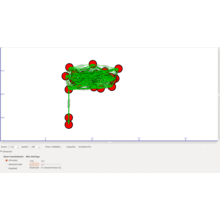NS3 GUI
NetAnim:
- NetAnim is a stand-alone program which uses the custom trace files generated by the animation interface to graphically display the simulation. NetAnim is based on the multi-platformQt4 GUI toolkit
- The NetAnim GUI provides play, pause, and record buttons. Play and pause start and stop the simulation.
- The record button starts a series of screenshots of the animator, which are written to the directory in which the trace file was run.
- Two slider bars also exist.
- The top slider provides a “seek” functionality, which allows a user to skip to any moment in the simulation.
- The bottom slider changes the granularity of the time step for the animation. Finally, there is a quit button to stop the simulation and quit the animator.
PyViz method
- PyViz uses Gtk+ and GooCanvas for the GUI part, and also accesses the ns-3 API directly, all via respective Python bindings.
- LTE devices do not support visualizer yet.
- The Visualizer class is a singleton that controls the whole visualizer GUI.
- It contains a list of nodes and channels, the canvas (goocanvas.Canvas), a list of arrows used to represent the packet transmissions, and assorted GUI elements, like the play/pause button

 Click Here to watch our latest output video using NS3 simulator
Click Here to watch our latest output video using NS3 simulator  Click Here to watch our latest projects screenshots using NS3 simulator
Click Here to watch our latest projects screenshots using NS3 simulator